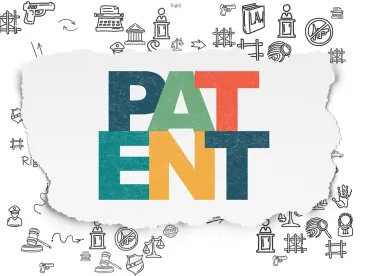In a recent article, we discussed several aspects of a July 2019 Update that the Patent Trial and Appeal Board (PTAB) issued to the PTAB Trial Practice Guide.[1] This article continues that discussion, addressing institution decisions on multiple petitions, and motions to amend.
1. Multiple petitions challenging the same patent
The July 2019 Update discusses the preferred practice based on the PTAB’s experience when there are multiple petitions filed at or about the same time, challenging the same patent. While recognizing that there are circumstances warranting more than one petition challenging patent claims, the Update states:
Based on the Board’s prior experience, one petition should be sufficient to challenge the claims of a patent in most situations. Two or more petitions filed against the same patent at or about the same time (e.g., before the first preliminary response by the patent owner) may place a substantial and unnecessary burden on the Board and the patent owner and could raise fairness, timing, and efficiency concerns. See 35 U.S.C. § 316(b). In addition, multiple petitions by a petitioner are not necessary in the vast majority of cases. To date, a substantial majority of patents have been challenged with a single petition.[2]
The Update further states that circumstances in which two petitions are needed “should be rare,” and, relying on its prior experience, “the Board finds it unlikely that circumstances will arise where three or more petitions by a petitioner with respect to a particular patent will be appropriate.”[3]
In presenting a procedure to help the Board determine whether more than one petition is necessary, the Update incorporates discussion from an April 2019 PTAB opinion discussing the handling of multiple petitions.[4] The petitioner should provide, either in its petitions or in separate paper not more than five pages long accompanying the petitions, and ideally in a table:
(1) a ranking of the petitions in the order in which it wishes the Board to consider the merits, if the Board uses its discretion to institute any of the petitions, and (2) a succinct explanation of the differences between the petitions, why the issues addressed by the differences are material, and why the Board should exercise its discretion to institute additional petitions if it identifies one petition that satisfies petitioner’s burden under 35 U.S.C. § 314(a).[5]
If the petitioner submits a justification for multiple petitions, the patent owner may oppose. Among the grounds that the patent owner may present are that differences the petitioner identifies are directed to immaterial or undisputed issues.[6] For undisputed issues, the patent owner should present any necessary stipulations including, for example, that certain limitations are not disputed, or that certain references qualify as prior art.[7]
The Update provides incentive for a petitioner to put its best foot forward, while at the same time being careful about the required ranking of petitions. When deciding whether to file multiple petitions, for example, using different prior art combinations to argue obviousness, there can be a concern that alleging material issues in the different petitions raise can denigrate one petition at the expense of another. However, oftentimes different prior art combinations fit together in different, complementary ways. In these circumstances, the petitioner can present the Board with different but equally strong motivations to combine, and therefore different justifications for institution. Likewise, where there are multiple anticipatory references, each reference may disclose different claim elements in different ways that, again, can be presented as alternatives.
No matter how the ranking comes out, it is important for a petition to identify asserted challenges with particularity. Otherwise, the Board could find that the petition identifies voluminous and excessive grounds, and deny a petition under 35 U.S.C. § 314(a).[8]
2. Motion to amend practice
The July 2019 Update describes a pilot program that the USPTO began in March 2019, providing options for a patent owner in filing motions to amend, including:
(1) requesting preliminary guidance from the Board in a first motion to amend, and (2) filing a revised motion to amend.[9]
The Update also confirms that, in presenting substitute claims in a motion to amend, the patent owner does not have the burden of persuasion on patentability.[10] The Board will look at the entirety of the record, including any petitioner opposition, to determine whether substitute claims are unpatentable by a preponderance of the evidence.[11] All else being equal, the Board should grant the motion to amend:
[I]f the entirety of the evidence of record before the Board is in equipoise as to the unpatentability of one or more substitute claims, the Board will grant the motion to amend with respect to such claims, and the Office will issue a certificate incorporating those claims into the patent at issue.[12]
A patent owner can increase its chances of having a motion to amend granted by explaining the amendment and providing arguments f patentability:
A patent owner should identify specifically the feature(s) added to each substitute claim and any proposed constructions for new claim terms. Although not required, patent owners may offer arguments regarding patentability of any proposed substitute claim and may support their arguments regarding patentability with testimony from a technical expert. For example, such testimony may be helpful to show what would have been known to a person of ordinary skill in the art and explain the significance of features added in a proposed substitute claim.[13]
While motions to amend must respond to a ground of unpatentability involved in the trial, it is not required that “every word added to or removed from a claim in a motion to amend be solely for the purpose of overcoming an instituted ground. Additional modifications that address potential 35 U.S.C. § 101 or § 112 issues, for example, are not precluded by rule or statute.”[14]
Relatedly, a petitioner opposing a motion to amend can raise unpatentability grounds related to issues other than 35 U.S.C. §§ 102 and 103, including 35 U.S.C. § 101 or § 112 issues.[15]
Stay Tuned
In the third and last article in this series, we will address the remaining three items in the July 2019 Update: motions for joinder; procedures on remand; and handling of the PTAB’s default protective order.
[1] Trial Practice Guide Update (July 2019) (“July 2019 Update” or “Update”).
[2] July 2019 Update, p. 26 (emphasis added).
[3] Id. (emphasis added).
[4] Comcast Cable Commc’ns, LLC v. Rovi Guides, Inc., Case IPR2019-00224, -00225, -00226, -00227, -00228, -00229 (PTAB April 3, 2019).
[5] July 2019 Update, p. 27.
[6] July 2019 Update, p. 28.
[7] Id.
[8] Adaptics Limited v .Perfect Company, Case IPR2018-01596 (PTAB, Mar. 6, 2019) (informative).
[9] July 2019 Update, p. 33.
[10] July 2019 Update, p. 34 (citing Aqua Products, Inc. V. Matal, 872 F.3d 1290 (Fed. Cir. 2017).
[11] July 2019 Update, pp. 34-35 (citing Lectrosonics, Inc. v. Zaxcom, Inc., Case IPR2018-01129, -01130, slip op. at 3-4 (PTAB Feb. 25, 2019) (Paper 15) (precedential).
[12] July 2019 Update, p. 35.
[13] July 2019 Update, p. 36.
[14] July 2019 Update, p. 38 (citing Lectrosonics, Inc. v. Zaxcom, Inc., Case IPR2018-01129, -01130, slip op. at 5–6 (PTAB Feb. 25, 2019) (Paper 15) (precedential)).
[15] July 2019 Update, p. 39 (citing Amazon.com, Inc. v. Uniloc Luxembourg S.A., Case IPR2017-00948, slip op. at 5 (PTAB Jan. 18, 2019) (Paper 34) (precedential)).




 />i
/>i

